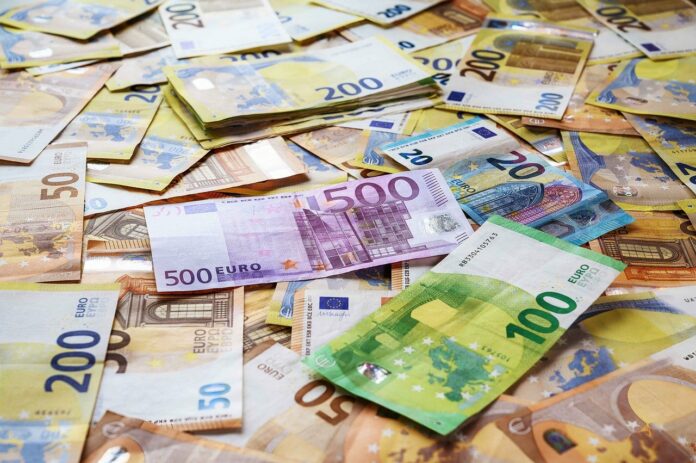It’s impossible to imagine the modern world without money. Since humanity invented the monetary system, relationships between people and communities have become much simpler. However, money-like systems existed even in ancient times alongside barter—the direct exchange of goods.
Even today, in some isolated places like the Amazon jungle and Papua New Guinea, there are tribes who have no concept of money or its purpose.
Facts About Money
- Ancient Currency: Indigenous people of South and Central America once used cocoa beans and tobacco leaves as currency.
- Livestock as Currency: Among many cultures worldwide, livestock is the most common substitute for money.
- Fur as Currency: In ancient Rus’, before the advent of metal coins, marten pelts were used as currency when trading with Eastern countries. This led to the coin being called “kuna.”
- Ancient China: In ancient China, cowrie shells were used as a form of money around 4,000 years ago.
- Lifespan of Banknotes: Paper currency typically lasts about three years before wearing out. Some, like U.S. dollars, are made to be particularly durable, with an average lifespan of 8-9 years.
- Plastic Money: In some countries, including Australia, Malaysia, and Vietnam, paper money is actually made from thin, soft plastic, making it durable and resistant to bacteria.
- First Paper Money: China is also the birthplace of the world’s first paper money, appearing around 3,000 years ago.
- Money Circulation: Throughout its life, a banknote passes through the hands of 30,000-50,000 people.
- The Dirtiest Item: Among all the things we touch, money is the dirtiest.
- High-Value Notes: The U.S. once issued $100,000 notes, but they were never circulated publicly and were only used for transactions between banks.
- Stone Money: In Micronesia, there are still stone currencies, the largest ever used. Some of these weigh several tons.
- Largest Denomination Coin: The largest denomination coin ever was a 100,000 Turkish lira coin, though Turkey has since undergone monetary reform.
- Most Common Banknote: The $100 U.S. bill is the most widely circulated banknote in the world.
- Portraits on U.S. Currency: Only deceased individuals are depicted on U.S. currency.
- Common Currency Names: The most common names for money worldwide are dollar, franc, and peso, used in numerous countries.
- Counterfeit Dollars: In the mid-19th century, up to 30% of all dollars in circulation in the U.S. were counterfeit.
- Higher Denominations Last Longer: Higher denomination banknotes tend to last longer because they wear out more slowly.
- Monopoly Money: Every year, 30-35 times more Monopoly money is printed worldwide than real U.S. dollars.
- Rare $2 Bill: A rare $2 U.S. bill was issued in a limited run to commemorate the country’s bicentennial.
- Iron Money in Sparta: In ancient Sparta, iron rods were used as currency. They were bulky and heavy, discouraging theft and bribery.
- First Round Coins: The first mass production of round coins began in ancient Rome.
- 100-Kilogram Coin: In Canada, a one-off 100-kilogram gold coin was minted with a face value of $100,000 CAD, though its actual value was much higher.
- Coin Edges: Coins come in various shapes, but historically, coins were often clipped around the edges to remove small amounts of precious metal. To prevent this, Isaac Newton suggested making coins round with serrated edges.
- Most Expensive Coin: The ancient Greek decadrachm is the most expensive coin in the world. These were minted only for significant events, making them incredibly rare and valuable today.
- Non-Presidential Portraits: While most U.S. currency features presidents, Benjamin Franklin, depicted on the $100 bill, was never president.
- Burning Money for Warmth: Colombian drug lord Pablo Escobar, once one of the world’s richest men, had to burn $2 million in cash to keep his family warm while hiding in the mountains.
- Hyperinflation: In Germany in the 1920s, hyperinflation devalued money so much that people used banknotes as wallpaper. A similar situation occurred in Zimbabwe and Venezuela in the 21st century.
- Gold Chervonets: The gold chervonets was the only hard currency in Soviet history, minted from the 1920s to the 1980s.
- First Wire Transfer: The first wire transfer in history was made via telegraph in the U.S. in 1918.
- Local Currency: In Ithaca, New York, alongside the dollar, there is a local currency in circulation.
- Highest Denomination Banknote: The highest denomination banknote ever issued was in Zimbabwe during hyperinflation, with a face value of 100 trillion Zimbabwean dollars.
- Private Money: Private money is sometimes issued by large companies, though it is now heavily regulated.
- Ivory Coast Coin: In Côte d’Ivoire, a limited edition coin containing pieces of mammoth bones was issued.
- Talking Coins: In 2007, Mongolia issued a series of coins featuring U.S. President Kennedy. The coins had a button that, when pressed, played a recording of one of Kennedy’s speeches.
- Wooden Money: After World War I, during a crisis in Germany, different cities printed money on anything they could find, including wood.
- Holy Water Coin: In 2008, Palau issued a commemorative coin containing a small vial of water from the French holy site of Lourdes.
- $1 Million in $100 Bills: One million U.S. dollars in $100 bills weighs about 10 kg.
